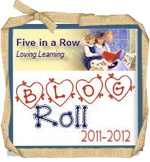A new fun book to explore and enjoy! A delightful story with many layers of lessons and well worth the read!
We began with a devotion discussing Col 3:17
We then discussed the setting of the story (Italy). We spent some time praying for Italy using the Operation World website information.
The first lesson we covered was one on restoration which was the job of one of the main characters in the book. We learned more about plaster from this site. And one tidbit that was mostly interesting to the adults is the origin of the name "Plaster of Paris". Is this something that you have heard? I never had and found it intriguing. Paris was known as the "capital of plaster" in the 1700s because plaster was widely used to coat the wooden walls of houses. This helped protect against fire. Gypsum plaster became known as "plaster of Paris."
We did our own wet fresco painting following these instructions.
When Plaster of Paris is mixed into a paste, it hardens into a smooth solid with a soft malleable surface. It hardens quickly, before the water in it evaporates, so it does not shrink as it dries. In our story, stucco or plaster is used to repair buildings. It can also be used as an art form. We discussed fresco painting and then did our own following these instructions.Snack time with ideas from the book. Pasta which they made into "nests" like the last picture in the book.
Daniel showing off his nest.
Everyone gathering around for food. LOL
We learned about pigeons in the form of a quiz. I asked questions to see that they knew. Here are a few if you want to test your knowledge.
1. Are all pigeons black like Sylvia?
2. What is a young pigeon called?
3. What is the life span of a pigeon?
4. How many babies does a pigeon have?
Answers:
1. No, they come in many colors
2. A squab
3. 10-15 years
4. They usually have 2 eggs per clutch and can have up to 8 clutches per year.
And did you know that pigeons are able to recognize all 26 letters of the English alphabet and can be taught complex actions and responses. They can remember large numbers of individual images for several years! This next fact fascinated me. During World Wars 1 and 2, they saved thousands of lives. Here is one site with more information on this.
And also how to draw a cartoon one from this site.
We ended with a bird's nest treat. Note the 2 eggs as was typical for a pigeon. These are made from rice krispies.
Here are the finished fresco paintings. All interesting and unique.
We enjoyed this book and learning about a lot of different topics. Such a fun way to explore our world.
Blessings
Leslie























